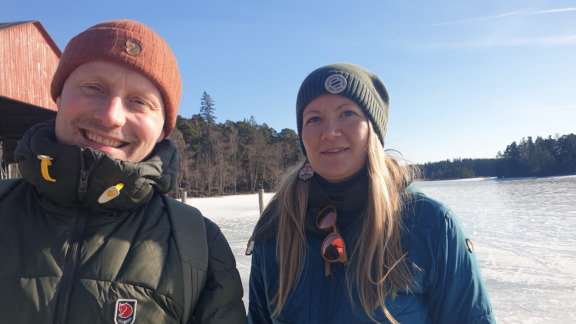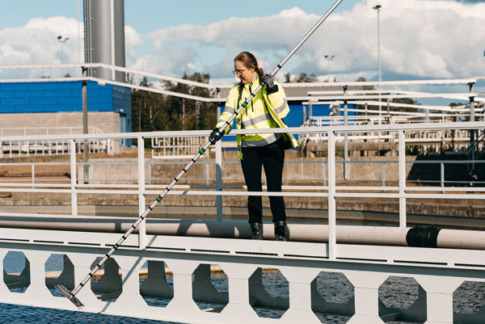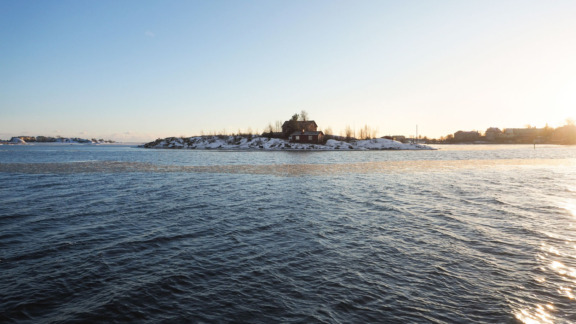Press material: Wärtsilä takes initiative in seeking shipping solutions to aid Baltic Sea
Wärtsilä, the marine industry’s leading ship power system integrator, in co-operation with Baltic Sea Action Group (BSAG), has arranged an environmental conference to seek shipping solutions that can benefit the seriously polluted Baltic Sea. The conference was held at Suomenlinna, a maritime fortress just off the coast of Helsinki on June 22.
Wärtsilä is strongly engaged in developing a wide range of environmental solutions to pave the way to cleaner shipping. The environmental conference was organised as an additional commitment following the Baltic Sea Action Summit held in Helsinki in February this year. More than 50 participants representing governments, ship owners, and universities took part in the discussions covering a range of topics, from an overview of the present situation in the Baltic Sea, to ship owner cases and available environmental solutions from Wärtsilä.
Co-operation cited as a key requirement
Co-operation emerged as one of the key words during the conference, and certain co-operation initiatives and projects were established. For example, BSAG and the Ship Owners Associations of Sweden and Finland will together seek ways to effectively influence governments and politicians. “We think that it is possible to increase shipping and still decrease pollution. However, a zero emissions target is impossible without co-operation,” says Mr Carl Carlsson, Director Environment & Sustainability for the Swedish Ship Owners Association.
Current environmental regulations for shipping are set by various authorities.
These regulations represent a challenge for the industry, and the conference discussed means for reducing harmful emissions of sulphur oxide (SOx), nitrogen oxide (NOx), carbon dioxide (CO2), ballast water, and oily water.
HELCOM is working to make the Baltic Sea into a NOx Emission Control Area (NECA), which would demand an 80 per cent reduction in NOx emissions. They also propose early implementation of the ballast water management convention in the Baltic area.
Solutions that bridge technology and environmental needs
The fact that some 90 per cent of goods are transported by sea was highlighted. Per Tunell, Head of Environmental Management at Wallenius Marine, spoke of his company’s efforts to achieve environmentally sound shipping, which he defined as meaning shipping activities that have no negative impact on the environment. Amongst the factors having a direct impact on emissions, Tunell emphasised the importance of fuel consumption. “Clearly, the less fuel consumed the fewer the emissions created,” he pointed out. “Among the methods currently being employed by Wallenius Marine to reduce fuel consumption is waste heat recovery, which accumulates five per cent fuel savings as a retrofit.” Wallenius is also exploring new ship design as a means for reducing emissions. “Wings mounted outside the bow have resulted in five per cent less fuel consumption at a speed of 15 knots,” he explained. The fuel cell evaluation project being carried out together with Wärtsilä, which has produced extremely positive results thus far, was also mentioned in this context.
Designing new ship concepts that aim at reducing emissions is one of the main focus areas for Wärtsilä Ship Design. Even minor adjustments to the hull design, for example, can give significant reductions in fuel consumption.
Ships that go on slower speed consume less fuel and produce less emissions. A question was raised as to who sets the speed requirement. An example that everyone in the audience could relate to was ordering a new car. None of the participants would mind waiting 3-4 days longer for their new car, if the slower transport might result in up to 15 per cent less emissions.
A glimpse into the future
During the conference, two university student groups, with members from Finland, Germany, Poland and Sweden, were given the task of suggesting future solutions to achieve environmentally sound shipping. In particular they focused on future power sources, future ship design, inland transportation versus sea transportation, and how to develop the co-operation between the Baltic area countries during the coming 25 years.
Both groups believed that the combustion engine will, in some form, survive the next 25 years. Much depends on the availability of fuel alternatives. Different combinations of fuel alternatives were proposed, as were sailing hybrids for new ship designs.
The conference inspired dialogue that generated much input, and was seen as being an important step towards realising vital co-operation between the various stakeholders. “Wärtsilä is very pleased with the outcome of the conference. Together with our customers and other stakeholders, we aim to develop environmental solutions that help the shipping industry fulfil its responsibilities to the environment, and to society in general; responsibilities that we all share,” says Christoph Vitzthum, Group Vice President, Wärtsilä Services.
On the following web sites you can find pictures, presentations and film material from the conference:
http://www.wartsilaevents.com/bsag
http://campaign.wartsila.com/sites/clean_seas/
Wärtsilä in brief
Wärtsilä is a global leader in complete lifecycle power solutions for the marine and energy markets. By emphasising technological innovation and total efficiency, Wärtsilä maximises the environmental and economic performance of the vessels and power plants of its customers.
In 2009, Wärtsilä’s net sales totalled EUR 5.3 billion with more than 18,000 employees. The company has operations in 160 locations in 70 countries around the world. Wärtsilä is listed on the NASDAQ OMX Helsinki, Finland.



